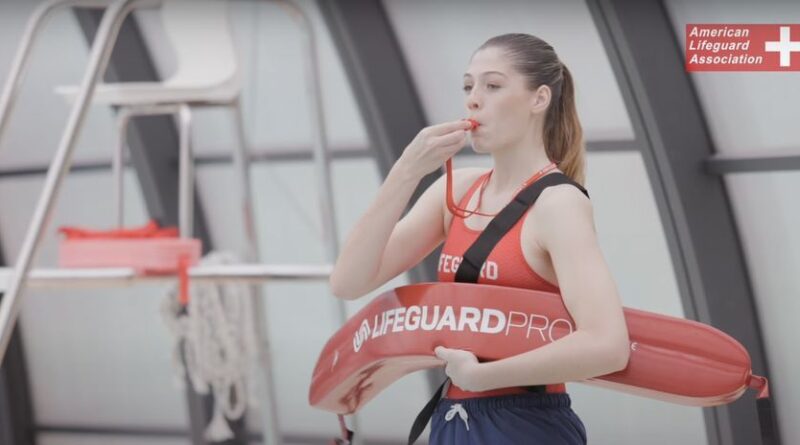Mastering the Waves: Lifeguard Class Primer
Preparing for Lifeguard Certification
Becoming a lifeguard takes dedication to water safety as well as physical fitness. The American Lifeguard Association (ALA) has been a leading source of training for professionals entrusted with protecting others around aquatic environments. This guide covers what to expect from the ALA’s gold standard lifeguard certification courses. With thorough preparation using these insights, you’ll be ready to take full advantage of the program’s online lifeguard class experience.
Prerequisite Skill Requirements
Most entry-level lifeguard classes require candidates demonstrate minimum competencies prior to enrollment. This includes the ability to swim 500 yards continuously using three strokes, treading water for two minutes without using hands, and retrieving a 10-pound object from depths of 7-10 feet then returning it to the surface. Practice these prerequisite skills well in advance so you can focus on course content during your online lifeguard class. Condition your breathing and endurance too with regular laps.
Online Class Platform Overview
The ALA delivers certification through interactive online lifeguard class on a customized learning management system. Students log in remotely to complete video lectures, skills sessions, quizzes and exams over the course of 2-3 weeks. Material covers CPR, first aid, injury prevention, patron surveillance techniques and more. Instructors lead virtual skill practices to ensure proper form. Though online, the high-caliber instruction is no different than in-person. Reliable internet access during your scheduled online lifeguard class times is key.
Required Equipment
Some items are needed to fully participate in the ALA’s online lifeguard classes. You’ll need access to a computer/device with microphone and webcam capabilities. Paper and writing tools are handy for taking notes. A regulation rescue tube, mask and fins allow practice and critique of crucial skills. CPR manikins may also be required depending on the course level. Consult your instructor to ensure having any necessary equipment before starting your online lifeguard class.
Schedule Considerations
Online classes offer flexibility but require commitment to scheduling. Block out ample time for your daily online lifeguard class sessions which typically last 2-4 hours. Interactive skill practice sessions often follow the live lecture periods. You must also allot time outside of class for studying theoretical knowledge using provided course materials. Employers may have restrictions on number of absences from work shifts too. With calendar coordination, the schedule flexibility of an online class becomes a benefit rather than barrier.
Technology Troubleshooting
Minor technical challenges are inevitable when taking classes virtually. Test camera/mic functionality and connectivity prior to each online lifeguard class session. Download any proxy browser apps to avoid video lags. Have a backup plan like a mobile hotspot in case of WiFi troubles. Communicate honestly with instructors if issues arise so they can help. Remain patient with yourself and others while troubleshooting. The ALA provides tech assistants for seamless participation regardless of any connectivity bumps during your online lifeguard class.
The Value of Practice
Retaining vast course information requires ongoing practice after online classes end too. Schedule regular study sessions to review materials with a buddy. Record yourself performing rescues and receive feedback to hone techniques. Simulate scenarios by verbalizing emergency responses out loud. Practicing is how new skills become second nature before being tested at a lifeguard job. With diligent practice habits formed early, online lifeguard class knowledge will stay with you lifelong as a certified professional.
Securing Certification
Once a course concludes, the ALA administers both written and skills-based final exams online to certify new lifeguards. Skills are assessed one-on-one via webchat while a proctor monitors the written. Passing scores prove masters of lifesaving responses, first aid maneuvers, scanning abilities and water rescue protocols. New certifications last 2-3 years on average. Continued education ensures professionals stay current on protocols throughout careers spent protecting public safety around aquatic recreational facilities.
Networking and Mentorship
Active involvement in the ALA community offers opportunities to expand your knowledge even beyond certification. Connect online with other professionals worldwide to share best practices. Volunteer at aquatic safety events and competitions. Take on leadership roles at a local aquatic facility.
More experienced ALA members also provide mentorship for those just entering the field. Ask peers for on-the-job advice about different facilities, unusual rescues or navigating shifts. Soak in their wisdom to be better prepared to one day mentor others through lifeguard classes yourself. Building a support system now sets the foundation for your entire career in aquatics safety.
In the end, by acknowledging the commitments required for online lifeguard classes and certification through the ALA, candidates can feel confidently prepared every step of the way. With dedication to both virtual sessions as well as independent practice, you’ll earn the respected titles of lifeguard and water safety role model. Reach out to ALA instructors anytime with questions to facilitate a supported learning experience. Read more information click here.

